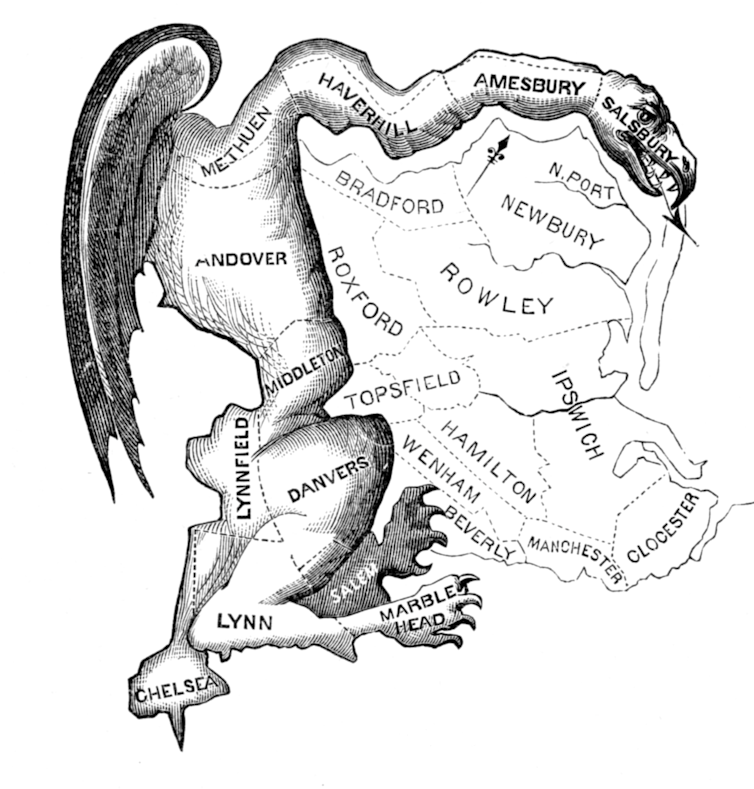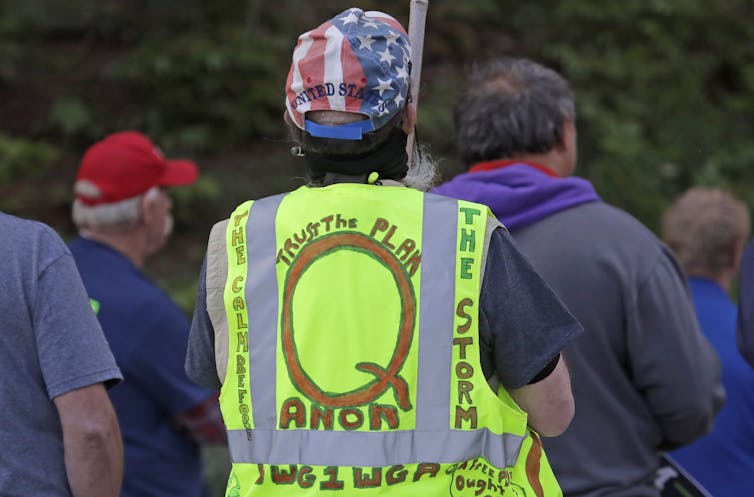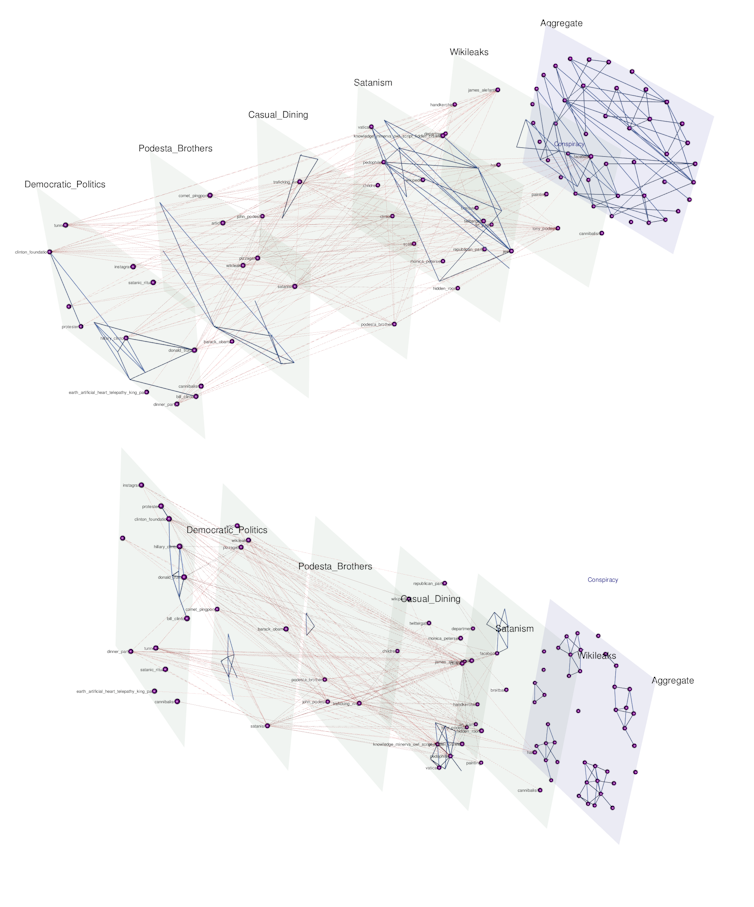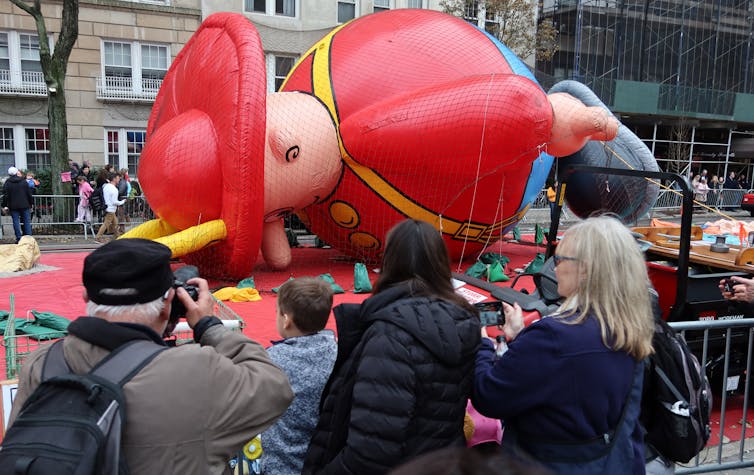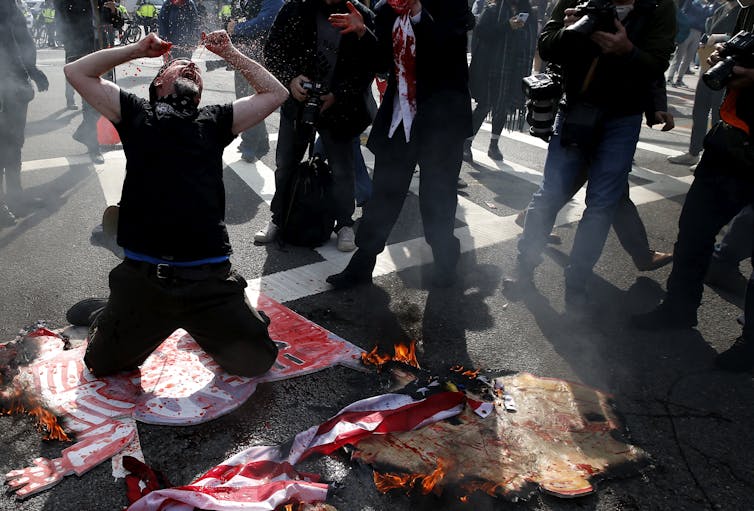Experts in autocracies have pointed out that it is, unfortunately, easy to slip into normalizing the tyrant, hence it is important to hang on to outrage. These incidents which seem to call for the efforts of the Greek Furies (Erinyes) to come and deal with them will, I hope, help with that. As a reminder, though no one really knows how many there were supposed to be, the three names we have are Alecto, Megaera, and Tisiphone. These roughly translate as “unceasing,” “grudging,” and “vengeful destruction.”
How often would you expect the wife and daughter of a deputy managing editor of a publication committed to bringing truth out of hiding to personally witness an episode of police misconduct? I would make a wild guess that, statistically, it must run close to the odds of giving birth to twins. Yet here we are.
================================================================
Last Halloween, my wife and then-6-year-old daughter were making their way home after trick-or-treating in Brooklyn. Suddenly, an unmarked NYPD car with sirens wailing began speeding against traffic up a one-way street, our neighborhood’s main thoroughfare. The officer seemed to be going after a few teenage boys.
Then, in an instant, the car hit one of the kids.
It was the first of many jarring things my family saw the NYPD do that night. Afterward, I tried to find out more about what exactly had happened and whether officers would be disciplined. There was footage and plenty of witnesses, and I happen to be an investigative journalist. I thought there was at least a chance I could get answers. Instead, the episode crystallized all of the ways in which the NYPD is shielded from accountability.
This happened in my neighborhood, Carroll Gardens, which is overwhelmingly white. Residents named it that in the 1960s to distinguish it from nearby Red Hook, where the population was largely Black. The area has changed enormously over the decades. But even now, it’s segregated almost block by block.
Halloween is the one day that it can seem like an integrated neighborhood. With lots of stoops and storefronts, there’s always plenty of candy to be had. Kids from the whole area come for the haul.
The police said a group of teenage boys that night had punched and kicked another teenager at a nearby playground and stolen his cellphone. The teen flagged down an officer and was driven around the neighborhood looking for the boys. He pointed out a group, and police descended from different directions. One car sped against traffic until it hit a kid; the boy slid over the hood, hit the ground, and then popped up and ran away along with the others.
My wife took a photo of the car right after:
The police then turned their attention to a different group of boys. My wife and others said they were younger and didn’t seem to have any connection to the ones who had been running. Except that in both groups, the boys were Black.
The police lined five of the younger boys against the wall of our neighborhood movie theater and questioned them, shining bright lights that made them wince and turn their heads. The smallest of the boys was crying, saying, “I didn’t do anything.”
My daughter took in the scene. “What did the boys do wrong?” she asked. The family members of a couple of the boys were there. They had all been trick-or-treating in the neighborhood.
The police eventually let the two boys with relatives go and arrested the three others: a 15-year-old, a 14-year-old and a 12-year-old.
My wife came home with my daughter and urged me to go back. I arrived about half an hour after everything started, a bit after 9 p.m., just as the handcuffed boys were put into a police car.
I watched the mom of one of the freed boys try to tell the ones being arrested to shout out their parents’ numbers, so somebody could tell them what was happening. An officer stood in front of the car window to block the boys from sharing their numbers. Another officer walked up close to the mom and started yelling at her to shut up. A senior officer backed him away.
I also watched another little girl take it all in. She was about the same age as my daughter. Except my daughter is white, as am I. The little girl is Black, and she had just watched her brother be put against the wall and her own mother being yelled at by a cop.
The boys were driven to our local precinct, the 76th. I eventually made my way there, too. The families of all the boys were there. The police are required to notify families when a minor is arrested. But the families told me that hadn’t happened. They’d learned about the boys’ arrests from friends. (The police later said the families showed up so quickly they didn’t have time to make notifications.)
The parents stood outside the precinct for the next four hours, waiting to be allowed to see their kids. One of the fathers, silent most of the time, said he was worried about how late the kids were being held because they still had school in the morning. A mother had to leave her 2-year-old with a neighbor. She paced around outside the station. “I blame myself,” she kept saying. “I never let him out on Halloween. A bunch of Black boys together. I shouldn’t have let him out. But he begged me.”
The police didn’t allow the parents into the station or let them see their kids. At one point, an officer came out, apologized and explained that the station was simply waiting for paperwork to go through. The boys were finally let out around 12:45 a.m.
They weren’t given any paperwork or records about what had happened or told the arresting officers’ names.
The next day, our daughter and her 8-year-old brother were full of questions: “Why did they arrest the boys if they didn’t do anything wrong?” “Is the boy that got hit OK?” I had questions, too. So I called the NYPD. What was the department’s understanding of what happened, I asked, and was it going to investigate any of the cops’ actions?
I felt a sense of kinship with the NYPD’s spokesman, Al Baker. He’s a former journalist. We followed each other on Twitter. Surely, he’d tell me the real deal.
Baker soon called me back. He had looked into it. The boys were being charged with something called “obstructing government administration,” which basically amounts to resisting arrest.
The police hadn’t done anything wrong, Baker said. I don’t know what your wife saw, he explained, but a police car did not hit a kid.
So I went back to my wife and asked her, “Are you sure?” She was sure. It happened right in front of her. Still, memories are fallible. So I went into nearby storefronts and asked if anyone had seen anything the night of Halloween.
“Yeah, I saw a cop car hit a kid,” a waiter told me. He said he had a clear view of it: A handful of kids were running. One of them jumped out into the street and got hit by the police car, “probably going faster than he should have been.” He saw the boy roll over the hood and fall to the ground: “It sounded like when people hit concrete. It made a horrible sound.”
I spoke to four witnesses, including my wife. All of them said they saw the same thing. When I called Baker back, he told me that my wife and the three others were mistaken. The car hadn’t hit the kid. The kid had hit the car.
As his statement put it: “One unknown male fled the scene and ran across the hood of a stationary police car.”
The NYPD has units devoted to investigating its own cops. The city’s district attorneys can also charge officers, of course. But there is supposed to be another check on abuse by police.
New York City has an agency dedicated to investigating civilians’ allegations against the police, the straightforwardly named Civilian Complaint Review Board. After reporterscovered what happened on Halloween, the CCRB responded to a Twitter thread I had written, saying it was investigating. Once again, I assumed we’d get answers.
But the NYPD has long fought against truly independent civilian oversight. Seventy years ago, community groups banded together and pushed the city to address “police misconduct in their relations with Puerto Ricans and Negros.” The NYPD responded by creating the CCRB. But it didn’t have any actual civilians on it. The board originally consisted of three deputy police commissioners.
The first outsiders were appointed more than a decade later, by Mayor John Lindsay’s administration. The police unions fought it. “I’m sick and tired of giving in to minority groups with their whims and their gripes and shouting,” said the head of one.
Things have changed a lot over the years. The civilian board now has about 200 staffers, and its investigators dig deep into cases. My wife said a CCRB investigator who called her was incredibly thorough.
They have lots to do. In 2018, the latest year for which there’s complete data, the board logged 2,919 complaints against NYPD officers for punching, shoving, kicking or pushing people. Each complaint can contain multiple allegations and involve multiple officers. About 9% of the members of the force have had six or more complaints of some type made against them.
The names of all of those officers have long been kept secret, which is finally set to change after New York repealed the notorious “50-a” law that had barred disclosure of police discipline records.
A recent CCRB report focused on police abuse against Black and Latino boys: “Young teens or pre-teens of color were handcuffed, arrested, or held at gunpoint while participating in age-appropriate activities such as running, playing with friends, high-fiving, sitting on a stoop, or carrying a backpack.”
In one case, a few boys were walking home and throwing sticks when police swarmed them, drew guns and ordered the boys up against a wall. The kids were “compliant and cooperative,” the report says, but the commanding officer at the scene decided to arrest two of the boys, ages 8 and 14, for disorderly conduct for throwing the sticks. The report notes: “The children were transported to the stationhouse, handcuffed and in tears.”
The report flagged a few other troubling patterns. One was the NYPD not notifying parents of arrests. Another was children being held for running from plainclothes officers.
I asked the NYPD about the report and everything else in this story. They didn’t respond.
The CCRB assiduously logs all complaints it gets against the police, about 7,000 per year. But actually investigating them, let alone meting out discipline, is a different matter. The NYPD still has control of nearly every step of the process.
Take body cams, which are now standard equipment for NYPD officers. There’s almost certainly footage of exactly what happened on Halloween. But civilian investigators don’t have direct access to the footage. They email requests to the NYPD, which decides which footage is relevant. The department takes its time.
The CCRB’s monthly report shows investigators have made nearly 1,000 requests for body cam footage that the NYPD hasn’t yet fulfilled. More than 40% of the requests have been pending for at least three months.
The CCRB and NYPD recently hashed out an agreement to marginally improve the process: CCRB investigators can now go to a room and watch footage. The agreement stipulates that CCRB staff can only take notes. They cannot record anything or use footage they see of abuse that happens to be different from the specific incident they’re investigating. They must sign a nondisclosure agreement. The deal runs nine pages.
It’s different elsewhere. Civilian oversight investigators in Washington, D.C., San Francisco and New Orleans all have direct access to the body cam footage. Unlike New York, police there can’t redact footage. “That type of behavior should have gone out about 50 years ago,” the head of Washington’s civilian oversight board told WNYC.
Here’s another glimpse into the leverage NYPD officers have: Since the pandemic started, officers haven’t allowed CCRB to interview them remotely, meaning investigations have effectively stalled. The police unions had objected to doing it over video.
“We won’t do Zoom,” one union spokesman told The City. The CCRB is re-starting in-person interviews soon. It noted 1,109 investigations are awaiting police officer interviews.
Most CCRB investigations aren’t completed, and not just because of police intransigence. The roughly 100 investigators can only handle so many cases at once. Each one is its own challenge; witnesses often don’t respond or are hesitant to say what they saw.
Mayor Bill de Blasio has increased the office’s budget in recent years to hire more investigators. But after the pandemic hit, de Blasio laid out a 6% cut for next year. (Asked for comment, the mayor’s office said the cuts are only for one year.) A city report recently noted that the CCRB’s staffing is already below the level mandated by a referendum passed last year to expand the agency.
If a complaint does end up being investigated, the police still get to decide what happens. The police commissioner can take the case back from the CCRB at any point. If the commissioner doesn’t interfere, and if the board — which still has some members chosen by the commissioner — finds that abuse occurred, then the CCRB can recommend discipline.
The CCRB has been able to get to that point and confirm plenty of cases. In 2018, again the most recent year for which there’s full data, the board calculated that the NYPD had 753 active officers who’ve had two or more substantiated complaints against them.
But even if the CCRB substantiates a case, the commissioner still has complete authority over what to do next. He can decide to simply ignore the recommended punishment. The commissioner can also let the case go before an internal NYPD judge (whose boss is the commissioner). If the judge decides punishment is merited, the commissioner can overturn or downgrade that, too.
The NYPD has rejected the CCRB’s proposed punishment on the most serious cases about two-thirds of the time.
So that’s how the system works. And this is what comes out of it: In 2018, the CCRB looked into about 3,000 allegations of misuse of force. It was able to substantiate 73 of those allegations. The biggest punishment? Nine officers who lost vacation days, according to CCRB records. (An additional five officers got a lower level of discipline left to the discretion of their commanding officer.) The most an officer lost was 30 vacation days, for a prohibited chokehold. Another officer wrongly pepper-sprayed someone. He lost one vacation day.
Last winter, I sat down with one of the boys my family saw arrested, Devrin. We were with his mom and the founder of the celebrated charter school he attends in Red Hook called Summit Academy.
Ellen DeGeneres gave college scholarships to the senior class a few years ago after the school founder, Natasha Campbell, wrote to her about the kids’ accomplishments. The vast majority of the students are Black or Latino.
Campbell told me her guess is that at least 40% have been stopped by police at some point. Students are stopped so often that the backs of their student IDs have instructions about what to do when that happens.
Devrin, who was in ninth grade and turned 14 the day before Halloween, sat with me and his mom in Campbell’s office. He’s about 5 feet tall and sat slightly hunched over. It was clear that sitting with a stranger and being asked questions about that night wasn’t his first choice. But his mom and Campbell had encouraged him to, so there he was.
Devrin answered a few questions I asked to try to break the ice. He loves basketball, is on the JV team and had practice in about an hour. Campbell pointed out that he’s never been suspended or disciplined at school.
“I don’t even get in trouble at home,” Devrin chimed in. And then he talked about his experience on Halloween.
Devrin said he was finishing up trick-or-treating when “I just saw a bunch of cops jumping out of their cars.” It was a confusing scene, particularly so because some of the police were in plainclothes, including one who started to go after Devrin. Devrin said he didn’t know the man was an officer.
“I was taught when I see danger to run,” Devrin said. He was starting to run home when he heard the plainclothes officer say he was following a suspect with a Tom & Jerry shirt. That’s what Devrin was wearing. “I turned,” Devrin recalled, “and he pointed a gun at me. He said, ‘Stop before I shoot.’ He was like this with both his hands” — Devrin mimicked holding a gun — “like he was about to pull the trigger.”
I spoke to another witness from that night who recalled the same scene but said the officer was pointing a Taser. Devrin and the witness, a law student named Zoe Bernstein, agreed on what happened next: The officer pushed Devrin to the ground and handcuffed him. “They tackled him,” Bernstein told me. “He just looked so young.”
Devrin was lined up against the wall. He’s the one who was crying, saying, “I didn’t do anything.”
After he was taken to the station, Devrin was handcuffed to a table along with the other boys, asked a few questions and mostly left alone. Then, they said, “You can leave now.”
“I didn’t really sleep that night,” Devrin told me.
He said he just wants to forget about what happened. His mother, Deveeka, wants to let him do that, “but I can’t sit in this thing and let it go. I want answers.” (I’m using only their first names at her request.) She was the mother at the station that night upset with herself that she had let him go.
She said she makes Devrin call her whenever he goes out, even to the corner store. “I’ll ask, ‘Dev, you OK?’ And he’ll say, ‘Yeah, you OK?’” She would seem to have a particular advantage in getting answers. At the end of our interview, she mentioned her job: She’s a school safety officer for a public school in Brooklyn. She works for the NYPD.
Deveeka said she was considering suing but said she’d had a hard time finding a lawyer because the police, her own agency, said they have no records to give her. And despite the NYPD announcing the boys had been charged with obstruction, they didn’t actually follow through with it. “All I have is a story,” she said.
Last week, facing enormous pressure after protests, de Blasio announced reforms. The city is going to post NYPD discipline records online, and police have to move quickly to investigate and release camera footage when there’s alleged abuse involving serious injuries or death. The police commissioner also said he’s disbanding a plainclothes unit that’s been involved in many shootings.
None of the changes limit the commissioner’s absolute discretion over discipline.
The CCRB said this month that it has received more than 750 complaints about NYPD abuse in less than two weeks involving the recent protests. There were 129 separate incidents reported. And the mayor’s office recently said there’s likely little bodycam footage of the incidents since the NYPD adheres carefully to an old civil rights agreement limiting the filming of protests.
I recently called the CCRB to ask the status of its investigation into the Halloween case.
It said the investigation is still open, along with 2,848 others.
But there is so much more to be done. This incident, and others like it, is why people are so mad they are saying “defund the police” when that isn’t even what they mean, exactly. I hope to see some progress in my lifetime … but I know I won’t live to see it solved. Too many Karens and Kierans out there.
The Furies and I will be back.


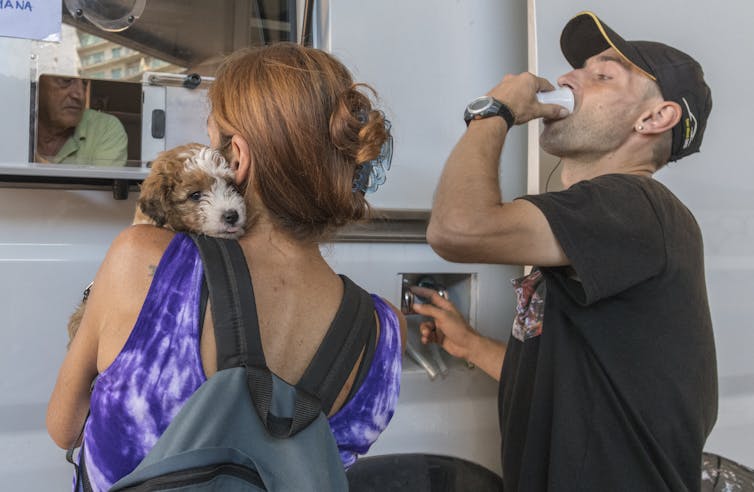
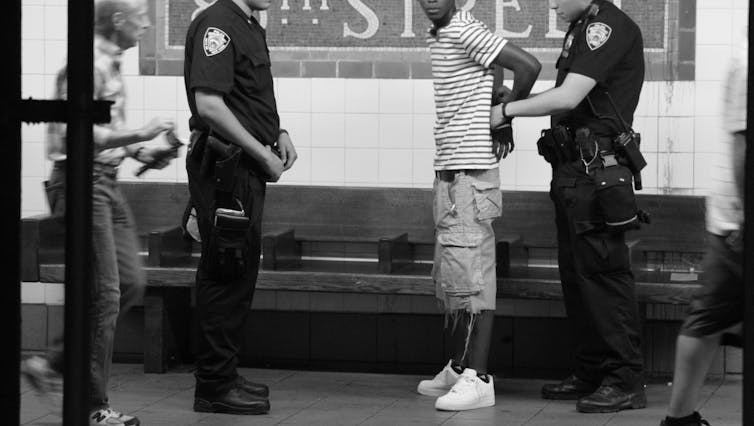
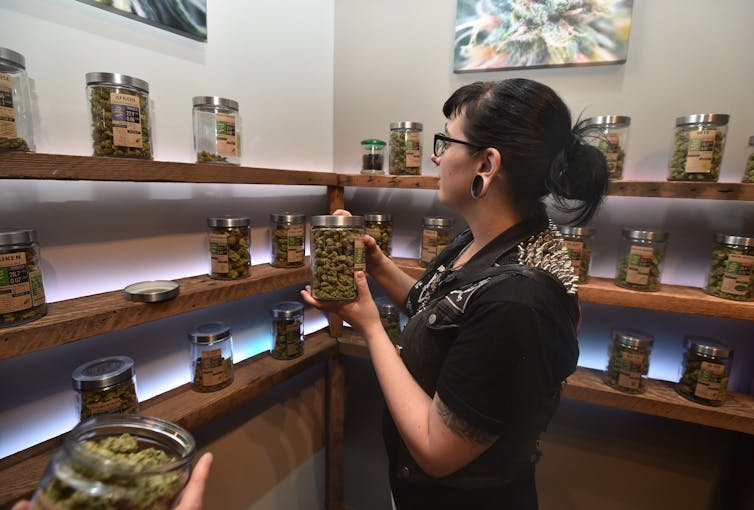
![]()





